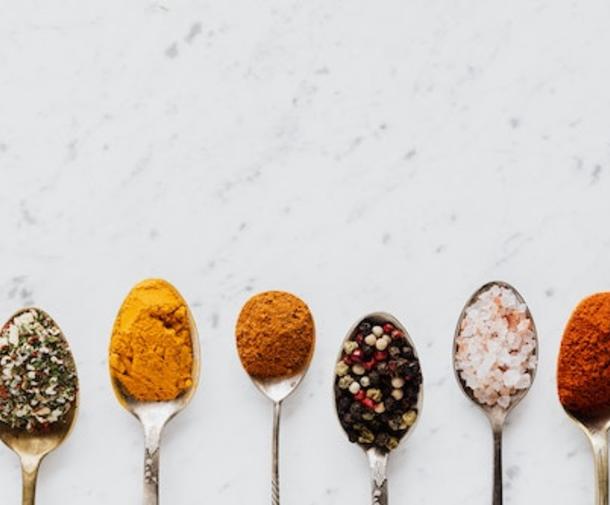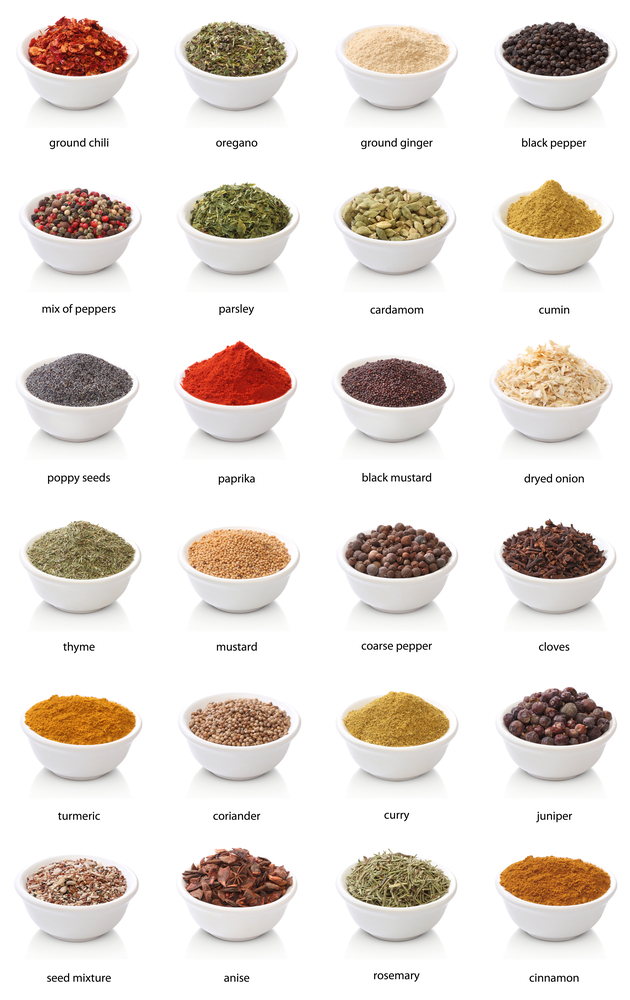
Seasonings & Flavors
Seasonings and flavors can drastically change a recipe! Explore how different ingredients can change the way food tastes and the way it feels.

Take a moment to imagine your favorite food…. Think about all the things that make that food taste good to you. Is it salty or sweet? Is it smooth and creamy or is it crunchy? Does it have subtle or bold flavors?
All of these questions are impacted by the seasonings and flavors of food.
Simple ingredients can drastically change the way a food tastes, so often seasonings are only needed in small amounts. What are some of your favorite seasonings to cook with?
Here are a few ways to start experimenting with different flavors and seasonings.
Salt is a flavor enhancer, so it helps bring out the flavors in different foods. Salt is used in recipes from cultures all over the world for its flavor enhancing qualities and for its ability to cure and preserve foods so they last longer.
Salt often gets a bad reputation for making people unhealthy and raising blood pressure. What’s important to know though is that when you are cooking with fresh, whole foods it’s good to add a little bit of salt to bring out all the flavors.
If you tend to eat a lot of processed foods that are already packaged and ready to go, your food doesn’t need added salt.
Ideas to add salt into your recipe:
Fat is an essential ingredient as it holds seasonings and changes foods’ flavor and texture. Fat is responsible for making foods crispy, creamy, tender, light, and flakey. Adding fat to a recipe will also make it more satisfying and keep you feeling fuller longer.
Take a look at the fat section to learn more about the different types of fat.
Ideas to add fat into your recipe:
Acid is an incredible ingredient because it can be used as a flavoring but also to break down and cook food on its own. As an ingredient, acid is added to recipes to give food a sourness or tang. Think about pickles or salsa! Even thinking about these acidic foods you may notice your mouth begins to salivate.
Acid is also used to break down and soften dense food like meats. Have you ever heard of or tried ceviche? This is seafood that cooks simply by sitting in lemon and/or lime juice. Another technique is adding orange juice to a homemade marinade so the meat tenderizes and softens.
Ideas to add acid into your recipe:
Finding unique and new ways to include sweetness into recipes can improve eating experience. Often sugar is added to our foods already, so you don’t need to add it to pre-done and packaged food. You could have fun experimenting with sweetness though when you cook fresh food. Sweetness can be added either by using a sweet ingredient like honey, agave, or maple syrup but foods can also be sweetened when they are cooked and the sugar is drawn out. Have you ever sauteed or caramelized onions? Just by cooking them, the sugar is drawn out and makes them taste sweeter. Most fruits also sweeten and caramelize when cooked, think about apples and bananas!
Ideas to add sweetness into your recipe:
Are you interested in learning a recipe that incorporates all these elements of flavor? Watch the video of nutritionist and chef, Jenny Breen, making a Black Bean, Tofu, and Miso salad.
Additional Seasonings
Are you curious about how to build a pantry and what seasonings to start with? Depending on where you live you may have access to dry and fresh herbs and seasonings. Try both and see which you prefer. As you grow more comfortable with different seasonings, you may even consider growing your own!
Here are a few ideas of some seasonings to start with:
